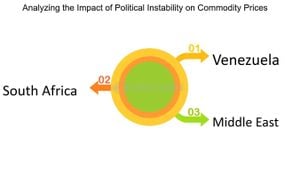Russia’s revised nuclear doctrine has sparked intense discussions about the increasing chances of nuclear conflict, particularly due to the recent escalation of hostilities involving Ukraine. With Russian President Vladimir Putin lowering the threshold for deploying nuclear weapons, analysts and political leaders are grappling with the potential ramifications of such aggressive posturing on the global stage.
On September 24, 2024, Putin announced significant modifications to Russia’s nuclear policy, which were officially formalized on November 19 of the same year. The updated doctrine, titled "Fundamentals of State Policy of the Russian Federation in the Field of Nuclear Deterrence", now allows the use of nuclear weapons not only against nuclear attacks but also against conventional military assaults threatening Russian sovereignty or territorial integrity.
Critics argue these revisions reflect Russia’s perceived need for stronger deterrence amid increasing Western support for Ukraine. With the U.S. granting Kyiv the green light to utilize Western armament, particularly the long-range ATACMS missiles, Russia felt the urgency to react decisively, fearing its territorial claims could be threatened.
The new doctrine amplifies existing rhetoric around self-defense, extending nuclear protection to Belarus, thereby integrating its security posture as part of Moscow’s broader military strategy. This alliance is particularly significant as Belarus has allowed Russian tactical nuclear weapons on its territory, framing the arrangement as more than just symbolic.
At its core, this policy shift signifies Russia’s readiness to deploy nuclear weapons at the slightest hint of territorial encroachment, framing incidents involving its military interests—such as actions by NATO or any states aligned with the U.S.—as grounds for nuclear retaliation. The doctrine explicitly classifies aggression against the Russian Federation by non-nuclear states, when supported by nuclear powers, as collective aggression.
Maxim Starchak, who specializes in Russian nuclear policy, argues this tactic of making aggressive threats serves not only as deterrence but also as psychological warfare intended to manipulate the strategic calculus of adversaries. He emphasizes the Kremlin's red lines are being tested on the Ukrainian battlefield, with Putin personally dictifying when nuclear options might be considered.
The ambiguity surrounding what triggers Russian nuclear response creates unease among Western leaders. For many, the fallout of any potential miscalculation could be catastrophic. Observers note the revised doctrine indicates Russia is willing to entertain the use of its nuclear arsenal to maintain its territorial integrity, thereby provoking concerns around escalation especially if one considers recent incidents involving missile strikes within Russian territory.
While the West has cautiously engaged with Ukraine, providing it with high-tech weaponry, it must tread lightly to avoid falling victim to nuclear blackmail. Reports indicate Ukraine has recently fired six ATACMS missiles at Russian military installations, prompting immediate warnings from the Kremlin. Such actions, under interpreted guidelines of the revised doctrine, present possible occasions for nuclear escalation.
On the military front, the Storm Shadow missiles, recently supplied by the UK, have also been reported as targets against Russian installations. Several analysts are now questioning if these actions could hypothetically trigger retaliatory measures from Moscow, leading to wider conflict scenarios. Although analysts believe the probability of Putin employing nuclear weapons remains relatively low, the fact remains any such use opens the door to unprecedented devastation.
Within this complicated narrative, some experts, including Air Vice-Marshal Sean Bell, stress Putin’s threats may be more fear-mongering than substantive. Bell argues the contemporary geopolitical climate is not akin to the Cold War, perceptions around which can skew international responses to conflict. He argues the Western political apparatus often vacillates under the threat of nuclear risk, inadvertently allowing Russian aggression to assume unchecked dimensions.
Indeed, observers from various quarters suggest the current dynamics signify not just Putin's capability but his intent to leverage past nuclear theories of deterrence as means of coercion to stifle Western support for Ukraine, manipulating the narrative of nuclear risk to maintain leverage.
This precarious situation leads to pressing questions: How will the West continue to support Ukraine without inflaming the conflict to catastrophic levels? And how might Russia's new assertiveness transform existing alliances on the European continent?
Consequently, it's worth noting the broader global implication of Russia's actions. The shift marks not only increased militarization on Russia’s part but also suggests realignment of NATO’s strategic approach toward Eastern Europe. Initiatives such as strengthening NATO's eastern flank have gained momentum as members anticipate potential Russian provocations beyond Ukraine.
With these developments set against the backdrop of tense geopolitical relations, it is clear the world is once again walking the fine line between diplomacy and outright confrontation. Observers argue maintaining open channels of communication and leveraging diplomatic efforts will remain imperative as nations navigate this complex arena.
With ramping tensions, the global community is left grappling with the consequences of Russia’s nuclear posturing. The stakes are exceedingly high, and the path forward must be navigated with caution to avoid reigniting the fears of the past, amid risks of nuclear escalation and its devastating potential.



